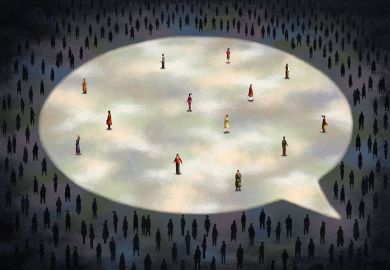The subtitle of this book is too modest - Nature, Art, Politics, Philosophy, History, War and the German Chemical Industry are what it is all about. Esther Leslie has woven these themes into a remarkable work of scholarship that is rewarding to read at many levels.
Although "page-turner" is not an adjective normally associated with reviews of academic books, it is one that sums up the enjoyment that I had when reading Synthetic Worlds . Complex though it is, comparison with other works is possible, and Charles Mackay's 1841 Victorian classic, Extraordinary Popular Delusions and the Madness of Crowds , comes to mind. Synthetic Worlds likewise could serve as a similar warning of what can happen when humanity takes leave of its senses.
Synthetic Worlds is the story of the growth of an industry that literally changed the world around us. What nature once provided was replaced with what coal could provide, and in abundance, and in a variety of colours and materials that even nature appeared to have overlooked. While the intellectuals and philosophers of Europe were indifferent to, or even opposed to, the new science and its industry, artists happily welcomed its products and politicians eventually came to realise what the industry could provide.
The awful marriage of chemistry and National Socialism still haunts us. Three large chemical firms and many smaller ones came together in the 1920s to form the conglomerate IG Farben, short for Industrigewerkeschaft Farbenindustrie (which translates roughly as Industrial Union of Dye Manufacturers). This innocent-sounding name became a vast Reich of chemical plants and factories that was eventually to supply the Nazis with materials as essential as synthetic rubber, as sophisticated as V-2 rockets and as terrible as Zyklon B. Indeed, IG Farben proved that it had the ability to make almost anything the Nazi regime wanted for its autarchic state and war machine, including nerve gases with which it could easily have ended the D-Day landings of June 6, 1944, but refrained from using out of fear of retaliation.
Joseph Borkin's The Crime and Punishment of IG Farben (1979) is an account of the company's various illegal activities, such as the expropriation of materials, the widespread use of slave labour and the millions of murders that occurred at its new plant, IG Auschwitz. This gigantic enterprise was designed to sustain the German Army as it swept east; in fact, it produced almost nothing. A more recent book by Werner Abelshauser et al, German Industry and Global Enterprise (2004), redresses the historical balance with an account of only one of the three IG Farben companies, BASF, which has now risen to become a leading international chemical company (and it does not gloss over the years of Nazi collaboration).
Synthetic Worlds charts the rise of the German chemical industry from its very beginnings in the first half of the 19th century, when it became clear that this science could indeed transform the world through industrial production based on academic research, thereby confounding the introspective philosophers of the 18th century, such as Kant, who thought that humans would for ever be denied a deeper understanding of the world.
To what extent it affected those who developed the ideologies that sought to change the world is debatable. Perhaps the rise of communism and of Nazism were in no way linked to the growth of this world-transforming industry, but having read Synthetic Worlds I am almost convinced that they were. Certainly Leslie regards the link as historically important.
Less controversially, the author devotes a chapter to an early German chemist called Friedlieb Ferdinand Runge - nicknamed "Dr Poison" by his students because he was fascinated by and researched vegetable poisons. However, it was his discovery of a new synthetic blue dye, Cyanol, in 1833 that marked a turning point for industry. Runge became better known as a populariser of chemistry, but he was also an artist, as his book of 1855 revealed. In Der Bildungstrieb der Stoffe , he showed some of the abstract designs that he had achieved by dropping dye solutions on to filter paper. The images are reproduced in Synthetic Worlds .
The chemical industry and art are still linked in many ways - witness the wonderful palette of non-toxic pigments and dyes that painters now use, or the semiconductors that have enabled the magicians of the computer age to transform the world of moving images, or even the preservative power of formaldehyde, which has allowed conceptual artists to enlighten us with real bodies.
Historians, too, have a rich vein to mine when they research this industry. Alfred Chandler's Shaping the Industrial Century (2005) is an admirable example of historical and economic analysis, but it lacks the human details that make Leslie's text such an enjoyable read to the very last paragraph.
Industrial chemistry is concerned mainly with producing compounds of carbon, hence its reliance on coal up to 1950, and now its dependence on oil and gas, and maybe one day soon on crops. Diamonds are pure carbon, but they are too rare to be turned into other materials; other materials, however, can be turned in to diamonds. Leslie ends her book by bringing the story full circle. What will be the raw material for new diamonds? The human body is the answer. The Chicago-based company Life Gem will turn the ashes from the cremation of your loved ones into diamonds of various hues (the process itself is carried out in Germany). A full-carat stone will set you back between $17,000 (£8,643) and $22,000 depending on the colour.
Maybe Synthetic Worlds casts its net too wide, and no doubt there will be those who seek to untangle and deconstruct its skein of academic themes. For the rest of us, it offers a source of well-researched information, thought-provoking debate and an enjoyable read.
John Emsley is a chemist based at Cambridge University and a popular science writer.
Synthetic Worlds: Nature, Art and the Chemical Industry
Author - Esther Leslie
Publisher - Reaktion
Pages - 256
Price - £25.00
ISBN - 1 86189 248 9



